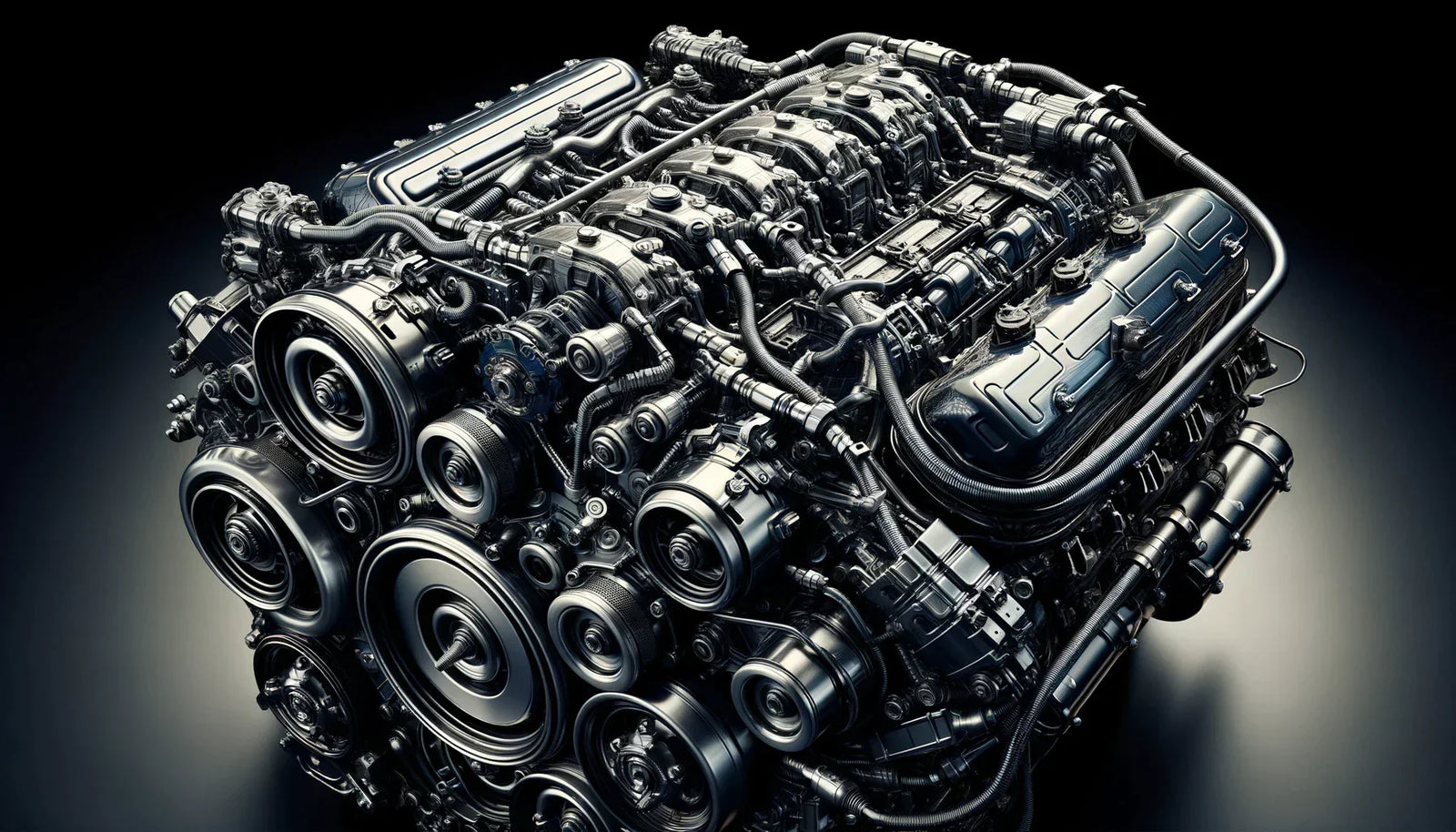Mastics in Automotive Manufacturing
Introduction
When it comes to automotive manufacturing, every detail matters, right down to the sticky stuff that holds parts together and keeps them sealed tight. That's where mastics step into the spotlight. But what exactly are mastics in the context of vehicle production, and why are they such a big deal?
Mastics are a type of sealant – a gooey, adhesive material that's used for sealing, bonding, and insulation purposes. In the world of cars, they are like the unsung heroes, working behind the scenes to ensure everything stays in place and functions smoothly. They're crucial for vehicle integrity, comfort, and even aesthetics. So, what makes them such a pivotal player in automotive manufacturing? Let's dive in and find out.
Types of Mastics Used in Automotive Manufacturing
Butyl Mastics
Properties and Uses
Do you ever wonder how your car manages to stay so quiet, even when you're driving at high speed? One word: butyl. Butyl mastics are a type of synthetic rubber that's tacky, flexible, and incredibly resistant to weathering. That means they're great at keeping out water, air, and even noise. They're used in a variety of applications, such as sealing windscreens and providing a watertight barrier in door panels.
Acrylic Mastics
Properties and Uses
Acrylic mastics are the unsung artists of the automotive world. They dry quickly, paint over like a dream, and have excellent UV resistance – meaning they don't throw a fit when exposed to sunlight. This type of mastic is often used for exterior applications where a strong bond and a clean finish are required, such as on trim or cladding.
Polyurethane Mastics
Properties and Uses
Now, let's talk about the tough guy of the group: polyurethane mastics. Tough as nails and as sticky as toffee in a toddler's hand, these mastics provide a super strong bond and are resistant to chemicals, oil, and fuel. You'll find them flexing their muscles in areas of the car that need to withstand high stresses, like in the assembly of body panels and chassis components.
Applications of Mastics in Automotive Manufacturing
Body Sealing
Importance of Body Sealing in Vehicle Assembly
Body sealing is like wrapping your car in a protective embrace. It keeps out moisture, dust, and air, ensuring that your ride stays dry and aerodynamic. Without proper sealing, your car would be more like a sponge, absorbing all the water and noise from outside.
Role of Mastics in Body Sealing
Mastics step in as the sealant of choice for this job. They fill in gaps and joints, creating a continuous seal that helps maintain the vehicle's structural integrity. By doing so, they ensure that your car doesn't just fall apart at the seams – quite literally.
Noise Reduction
Use of Mastics for Noise Dampening
Have you ever been in an old car where you had to shout to be heard over the roar of the road? Not a pleasant experience, is it? Modern cars are much quieter, thanks to mastics. These materials are applied in strategic areas to absorb vibrations and reduce the amount of noise that makes its way into the cabin.
Impact on Vehicle Comfort and Quality
The reduction of noise and vibrations does more than just make for a quieter ride. It also reduces the wear and tear on vehicle components, as constant vibration can loosen fasteners and wear out parts over time. Plus, a quiet car is a mark of quality – it feels solid, well-built, and luxurious.
Adhesion and Bonding
Role of Mastics in Adhesion and Bonding of Automotive Components
Mastics don't just seal; they also stick things together – really, really well. They are used to bond different materials, such as metal, plastic, and glass, ensuring that these components stay where they're supposed to be.
Ensuring Structural Integrity and Safety of Vehicles
The strength and flexibility of mastics mean that they can absorb impacts and distribute stresses across a joint, which is crucial in the event of a collision. This not only keeps the car together but also keeps its occupants safer.
Advantages of Using Mastics in Automotive Manufacturing
Enhanced Durability and Longevity
How Mastics Contribute to the Longevity of Automotive Components
Imagine a car that rusts out after only a few years or leaks every time it rains. Not exactly a good investment, right? Mastics play a key role in preventing these issues by providing a durable barrier against environmental factors, which can extend the life of a vehicle significantly.
Improved Vehicle Performance
Impact of Mastics on Vehicle Performance and Efficiency
It's not just about keeping things together; mastics also play a role in making cars more efficient. By ensuring a tight seal, they reduce drag and make the car more aerodynamic, which can lead to better fuel efficiency. It's like giving your car a little performance boost without having to tweak the engine.
Aesthetics and Finish
Contribution of Mastics to the Overall Appearance and Finish of Vehicles
Let's face it, appearance matters. A car that looks good is more likely to catch your eye on the showroom floor. Mastics can be used to create smooth, seamless finishes on car exteriors, which not only look great but also help protect against corrosion and wear.
Challenges in Using Mastics in Automotive Manufacturing
Compatibility with Different Materials
Issues Related to Compatibility with Various Automotive Materials
Not all materials get along like peas in a pod. Some mastics might not play nice with certain plastics or metals, leading to poor adhesion or even damage to the components. It's a bit like trying to write on a glossy paper with a regular pen – the ink just won't stick.
Environmental Considerations
Impact on Environmental Sustainability and Regulations
We're all trying to be a bit greener these days, and the automotive industry is no exception. Mastics have to meet stringent environmental regulations, which can be a challenge when it comes to formulation and disposal. It's like walking a tightrope: you need to balance performance with eco-friendliness.
Application Consistency and Precision
Ensuring Uniform Application of Mastics in Vehicle Manufacturing
Applying mastics is a bit like icing a cake – it needs to be just right. Too much or too little can lead to leaks, wind noise, or even structural weaknesses. It's a delicate balance that requires precision and consistency during the manufacturing process.
Innovations and Developments in Mastic Technology
Advanced Formulations
Evolution of Mastic Formulations for Improved Performance
In the quest for the ultimate mastic, scientists and engineers are like chefs experimenting with new recipes. They're constantly whipping up advanced formulations that push the boundaries of performance. These new kids on the block offer better adhesion, increased flexibility, and superior resistance to extreme temperatures and chemicals. It's like upgrading from a bicycle to a sports car – the new generation of mastics takes performance to the next level.
Application Techniques
Innovations in Mastic Application Methods for Enhanced Efficiency
Applying mastics has become an art form. With innovations in application techniques, gone are the days of slapping it on and hoping for the best. Now, precision robots and automated systems ensure that just the right amount of mastic is used every time, in exactly the right place. It's like having a master painter at work, ensuring every stroke is perfect.
Environmentally-Friendly Mastics
Development of Sustainable and Eco-Friendly Mastic Solutions
Planet Earth is giving us a nudge, and the mastic industry is listening. The development of eco-friendly mastics is on the rise. These greener options are made from renewable resources and are less harmful to the environment when it comes to production and disposal. Imagine a world where cars are not only efficient and reliable but also kinder to the environment – that's the future these sustainable mastics promise.
Quality Control and Testing of Mastics in Automotive Manufacturing
Adherence to Industry Standards
Compliance with Automotive Industry Regulations and Standards
Quality control in the world of mastics is like the rule-abiding traffic warden of the automotive industry. It ensures that every batch of mastic meets the highest standards and complies with strict industry regulations. Whether it's ISO certifications or automotive-specific standards, adherence to these rules is non-negotiable.
Performance Testing
Methods for Evaluating the Performance and Effectiveness of Mastics
How do you know if a mastic is up to the task? You put it to the test. Performance testing is the rigorous gym workout that mastics go through to prove their strength and endurance. Manufacturers put them through a series of challenges, including stress tests, temperature variations, and exposure to chemicals, to ensure they can handle the tough life of an automotive component.
Quality Assurance in Production
Ensuring the Quality and Reliability of Mastic Applications in Vehicle Manufacturing
Quality assurance is the watchful eye over the production of mastics. It's all about checks and balances, making sure that every single application is spot on. With state-of-the-art monitoring equipment and stringent inspection processes, manufacturers ensure that the mastic applied in each vehicle is of the highest quality and will stand the test of time.
Conclusion
The journey through the world of mastics may have been sticky, but it's clear that these powerful sealants play a crucial role in automotive manufacturing. From enhancing the durability and performance of vehicles to improving their appearance and ensuring safety, mastics are an indispensable part of the process.
Summary of the Significance of Mastics in Automotive Manufacturing
It's no stretch to say that without mastics, cars would be noisier, less comfortable, and more prone to wear and tear. These sealants ensure that the vehicles we depend on every day are safe, reliable, and can withstand the rigours of the road. In the grand tapestry of automotive manufacturing, mastics are the threads that bind everything together.
Future Prospects and Potential Advancements in Mastic Technology
What does the future hold for automotive mastics? We're looking at smarter, more responsive formulations that could adapt to changing conditions, application methods that are even more precise, and sustainability taking centre stage. The horizon is bright, with innovative mastic solutions driving us towards a more efficient, reliable, and eco-friendly automotive future.
In conclusion, the next time you're cruising down the motorway, spare a thought for the humble mastic. It might just be the reason your ride is smooth, quiet, and dry. With ongoing advancements, the importance of mastics will only accelerate, helping to steer the automotive industry towards an even more impressive and sustainable future.






















































